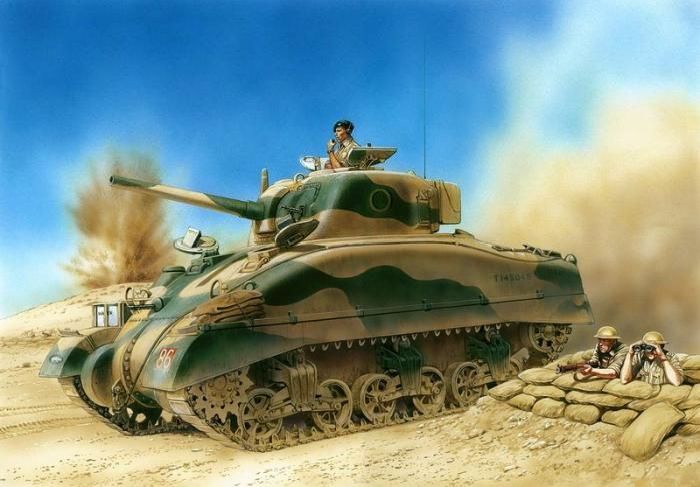|
|
Tank Drawing
|
World War II was the first conflict where armoured vehicles were critical to success on the battlefield and in this period the tank developed rapidly as a weapon system. It showed how an armoured force was capable of achieving a tactical victory in an unprecedentedly short amount of time. At the same time, however, the development of effective anti-tank weaponry demonstrated that the tank was not invulnerable.
Prior to World War II the tactics and strategy of deploying tank forces underwent a revolution. Heinz Guderian, a tactical theoretician who was heavily involved in the formation of the first independent German tank force, said "Where tanks are, the front is", and this concept became a reality in World War II. Following the Invasion of Poland where tanks performed in a more traditional role in close cooperation with infantry units, in the Battle of France deep independent armoured penetrations were executed by the Germans, a technique later called blitzkrieg. Blitzkrieg made use of innovative combined arms tactics and radios in all of the tanks to provide a level of tactical flexibility and power that surpassed that of the Allied armour. The French Army, with tanks equal or superior to the German tanks in both quality and quantity, employed a linear defensive strategy in which the armoured cavalry units were made subservient to infantry as "support weapons". In addition, they lacked radios in many of their tanks and headquarters, which limited their ability to respond to German attacks.
In accordance with blitzkrieg methods, German tanks bypassed enemy strongpoints and could radio for close air support to destroy them, or leave them to the infantry. A related development, motorized infantry, allowed some of the troops to keep up with the tanks and create highly mobile combined arms forces. The defeat of a major military power within weeks shocked the rest of the world, resulting in an increased focus on tank and anti-tank weapon development.
The North African Campaign also provided an important battleground for tanks, as the flat, desolate terrain with relatively few obstacles or urban environments was ideal for conducting mobile armoured warfare. However, this battlefield also showed the importance of logistics, especially in an armoured force, as the principal warring armies, the German Afrika Korps and the British Eighth Army, often outpaced their supply trains in repeated attacks and counter-attacks on each other, resulting in complete stalemate. This situation would not be resolved until 1942, when during the Second Battle of El Alamein, the Afrika Korps, crippled by disruptions in their supply lines, was forced to retreat by a massively reinforced Eighth Army, the first in a series of defeats that would eventually lead to the surrender of the remaining Axis forces in Tunisia.
|
|









